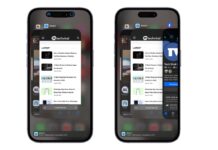Recently security researchers discovered two different vulnerabilities that could simply allow anyone to bypass Apple’s iPhone and iPad activation lock. The first one discovered by the Hemanth Joseph, a security researcher from India.
Here’s How Hackers Can Break iPhone And iPad Activation Lock
The tech giant Apple introduced in iOS 7 security feature Activation Lock (Activation Lock) that allows users to remotely lock their respective device in case of theft or loss.
But now the researchers have discovered two vulnerabilities in the mechanism of iPhone and iPad that allows its deactivation. One impacts devices running iOS 10.1 and another on the most current version of the software, iOS 10.1.1. The first one discovered by an Indian security researcher.
The activation lock is a feature of Find My iPhone, designed to prevent anyone else to use your iPhone, iPad, iPod touch or Apple Watch in the case of any loss or theft. The activation lock is activated automatically when the Find My iPhone is turned on.
With the activation lock your Apple ID and password will be requested whenever someone unknown will try to:-
Disable Find My iPhone on the device functionality
Delete the data
Reactivate and use the device
But now a breakthrough revealed which shows that it is quite easy to ignore this security mechanism provided by the Cupertino company Apple. Hemanth Joseph, a security researcher who works out of Kerala, India. Hemanth Joseph is one of the first to detect this failure, states that just use a long string of characters simply to confuse the Activation Lock.
Hemanth Joseph’s workaround exploited a weakness in the iOS device setup process, and he tested it on a locked iPad that he purchased from the e-commerce site eBay. When he was asked to choose a WiFi network, Hemanth Joseph simply chose ‘other network’ and then proceeded to fill its name and a WPA2-enterprise key in with thousands of characters.
As the security researcher Hemanth Joseph predicted that enough data in those fields would definitely cause the device to freeze, and after implementing his trick he found that he was exactly right.
After that, the security researcher Hemanth Joseph began to work on a way to make the ‘setup process fail’ and drop him on the home screen. Pressing the power on/off button simply restarted the wizard, but with a little help from the magnetic catch in Apple’s ‘Smart Cover’ and some practice to perfect the timing, Joseph succeeded.
Note that have been discovered at least two variants of this vulnerability, one in iOS 10.1 (discovered by Hemanth Joseph) and another now in iOS 10.1.1 (by researchers from the Vulnerability Lab).
See this video demonstration which will show you how all it works:-
The bug discovered by the security researcher Hemanth Joseph was reportedly fixed in an iOS update on November 16, 2016. While the second appears to be unpatched, but, it is expected that it could change with the arrival of iOS 10.2 which is currently in beta phase.



